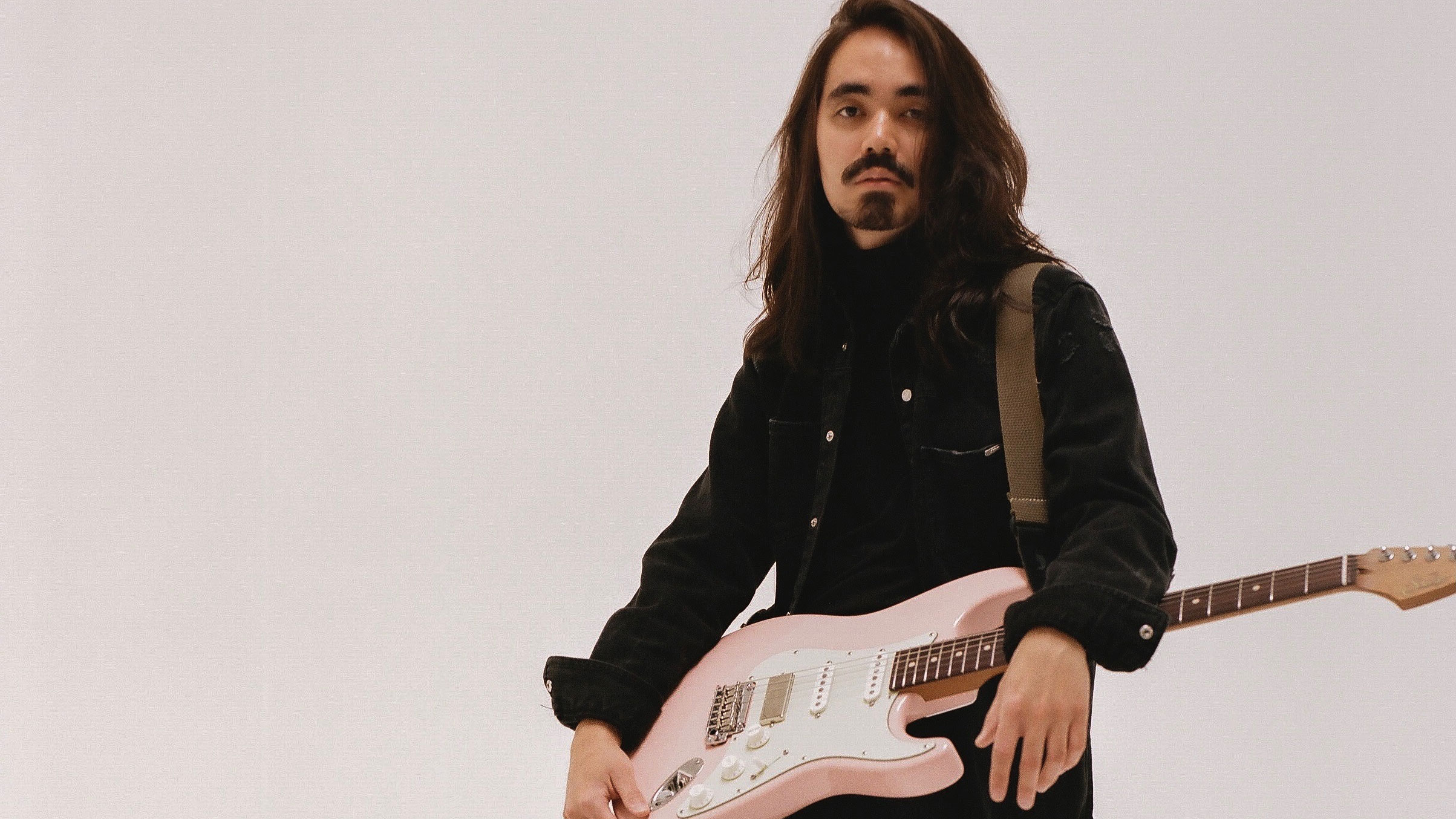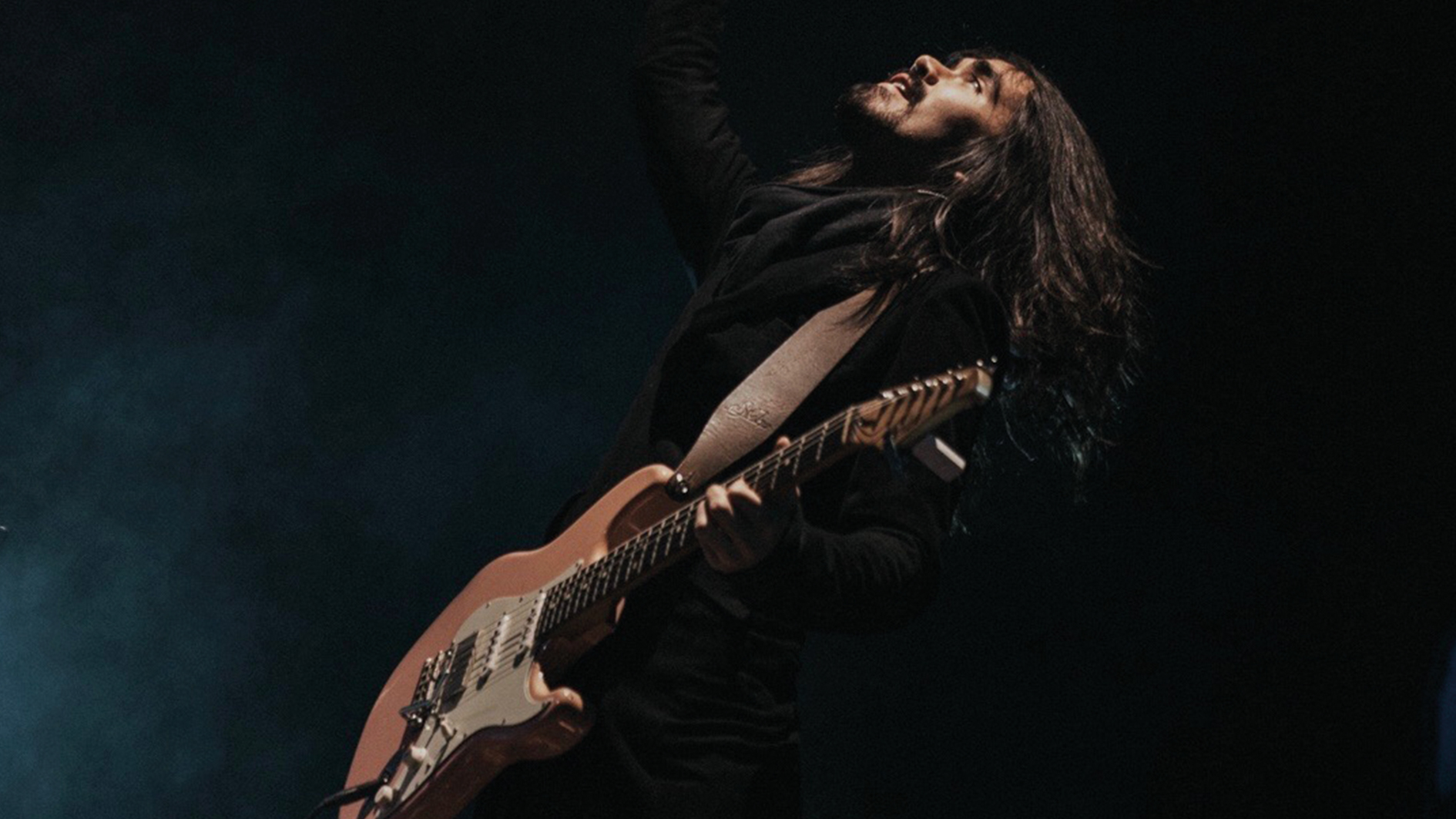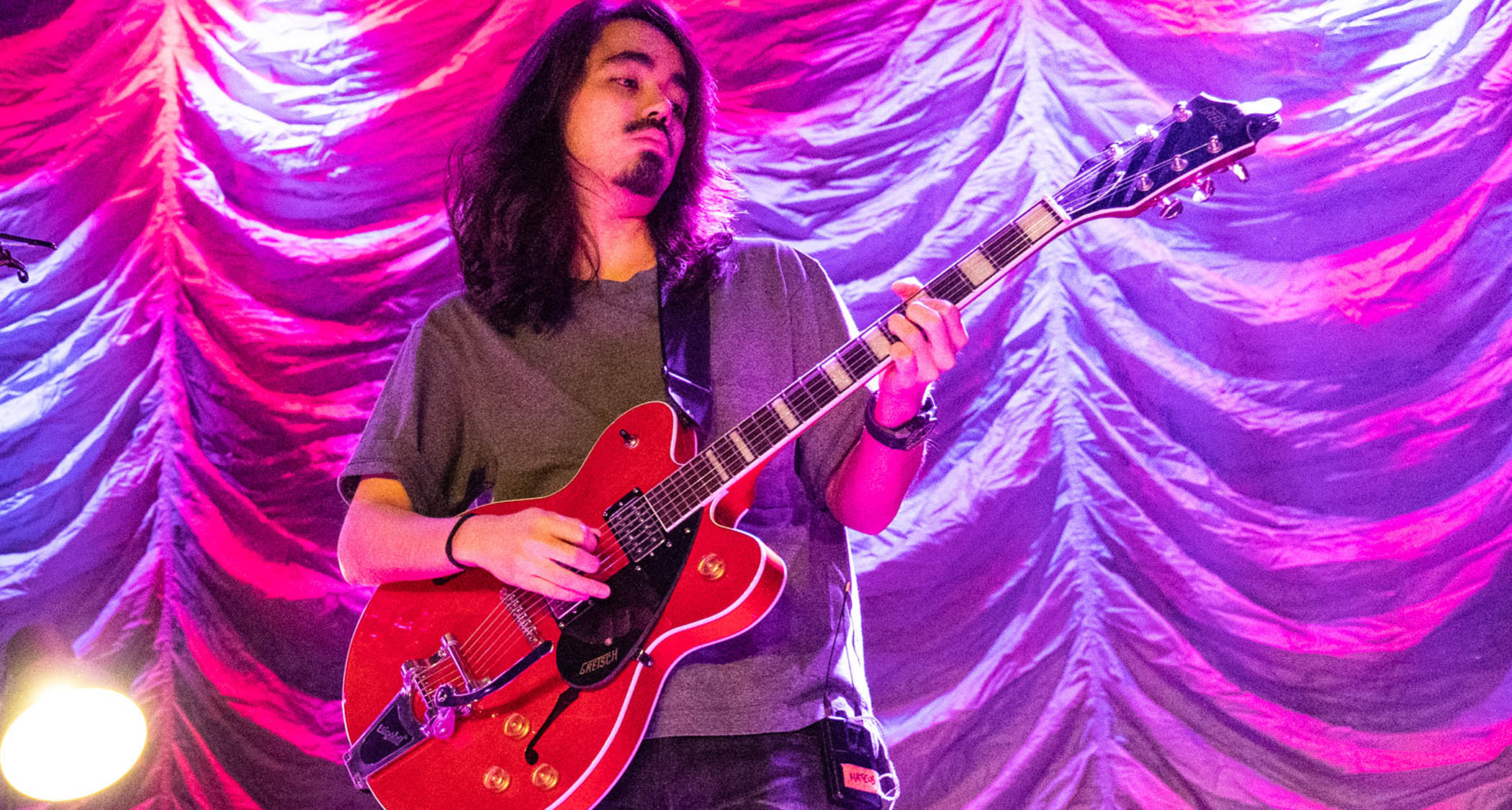“My phone rang – Nuno told me to get to Sao Paulo right away. I arrived 30 minutes before guesting on Get the Funk Out”: Mateus Asato on landing the Bruno Mars gig, playing with his heroes and how his pink Suhr went from reject to best-selling signature
Asato leads an amazing double life as pop sideman and virtuoso shredder. He dishes on his big social media mistake, the help he got from Kiko Loureiro, and the last-minute call from Nuno Bettencourt he couldn’t ignore

Mateus Asato is the living, breathing definition of a 21st century guitar hero. The 31-year-old Brazilian has amassed millions of followers online, won the respect of his biggest heroes and headlined arenas all around the world with household name pop artists such as Bruno Mars, Jessie J and Tori Kelly.
He’s also a longtime Suhr endorsee and released his own signature series back in 2018, with his first model based on the Pink S-style guitar featured in some of his most successful videos.
Perhaps the key to his success lies in his versatility – he knows how to shred but also how to serve the song – the two don’t always go hand-in-hand. His ability to adapt and thrive in a multitude of musical situations commands respect too. He’s not just an online personality; he’s out there performing on the world’s biggest stages.
When Guitar World connects with him, he’s in the middle of a short clinic tour. “It’s all about bringing that connection between us players closer,” he says, a few hours before hitting the stage at Dawsons Music on London’s Denmark Street.
“The last clinic I did was just before Covid. Since then I’ve done guitar camps with John Petrucci, Joe Satriani and Steve Vai – those were really amazing. With these ones I have more time with everyone. It’s a chance to explain how I joined Silk Sonic, played with Bruno Mars and that I have a record in the making... finally!
“I guess there’s a lot of curiosity with me. People wonder ‘How?’ because I’m involved in the pop scene. It helps avoid getting stuck in the things us guitarists love – playing too many notes on a quest for good tone! I try to keep my mind open and be diverse.”
It’s exciting to hear there’s an album in the works. You’ve released snippets of music online but people are hungry for that debut.
Get The Pick Newsletter
All the latest guitar news, interviews, lessons, reviews, deals and more, direct to your inbox!
“It’s taken so long because there’s so much going on mentally. From when I left the Musician’s Institute to now, the formation of my identity was in progress. All creatives are in a state of constant change.
“I started out as a sideman backing these big pop artists, but I’m also a guitarist who loves instrumentals. Some people don’t get it – they ask, ‘Is this lounge music?’ or, ‘What does it mean?’ or, ‘Is it just one big guitar solo?’
I’ve never been more excited about my own project. Before this point I wasn’t sure if I was ready
“I had a lot of conflict with myself when it came to my art. At one point I was going to write an album with a bunch of collaborations and go for the mainstream thing. Recently I realized these short instrumental pieces are my true identity.”
What helped you change your mind?
“I remember hanging out with Kiko Loureiro at a guitar camp, telling him those snippets on my Instagram aren’t actually songs. He stopped me and said, ‘Art comes in different forms – what you’ve been doing online is like a musical mosaic.’ He said all those little clips are like a piece of art with its own personality. That gave me so much confidence.
“Right now, I can say I’ve never been more excited about my own project. Before this point I wasn’t sure if I was ready. Now I understand we all have references – no man is an island – but I can only be Mateus Asato. I go to bed and think of the album. I wake up and think of the album. It feels amazing!”

You can show vulnerability by playing soft and subtle, but also blast through Paul Gilbert runs when the time calls for it. When did you learn how to rip like that?
“When I was 12, I got introduced to Dream Theater. Before that, I was more into this psychedelic style. I’ve had three phases as a player, which I call the three Johns. There was Frusciante, then Petrucci and then Mayer.
Slide guitar is something I never explored. It’s become a personal goal in my 30s… I want to sound like Derek Trucks
“John Petrucci arriving in my life is when I started to expand into the whole virtuoso thing. He’s well-known for insane alternate picking. Then I got into Paul Gilbert and Racer X. Learning songs like Scarified and Technical Difficulties was a big part of my evolution.
“I wanted to have the controlled aggression – it wasn’t about playing all the same notes; more about finding the texture. Then I applied those sequences to different scales. I think being young helped.
“For example, slide guitar is something I never explored. It’s become a personal goal in my 30s. I want to get better and sound like Derek Trucks, but because of my age, it’ll be more difficult.”

You’re known for coloring pentatonic ideas with extra notes like a 2nd or 6th. What advice can you offer people who feel stuck in a rut and want to explore other places?
“There was a moment when people were deprecating the pentatonic scale and that motivated me to run against them. If you pay attention to classic riffs, a lot of them come down to just five notes. I get it – there are only five notes, but those five notes are the foundation. They have so much meaning and power. The pentatonic flavors are often the strongest.
“I started to analyze my own playing and realized it’s all pentatonic, but with those added intervals. I created my Asatonics course to help people see they can go beyond regular pentatonics by breaking out of those cliches. You’ll only end up being close-minded if you let the shapes put you in a cage.”
What exactly does Bruno Mars look for in a session player?
“It’s interesting, because we don’t have the same language on guitar. There are similarities, but our differences are what make it such a beautiful encounter. There are always cards you can throw on the table to impress the other player. His music is ’70s funk-led, and though I never mastered funk, I tried to get the basics covered.

“I’m coming in as something different – I’m a soloist. Bruno realized it could work because of that. He’s a brilliant musician, an exceptional singer and dancer that plays drums and guitar. I was blown away at that first rehearsal.
“I knew there were more appropriate guitar players for the Silk Sonic gig. Bruno felt it was a great match because I could do the shred stuff on top.”
You’ve been with Suhr for a long time. Is there anything you’d like to do with them in the future?
I was looking at my guitar like a job… there’s a big difference between filming content and making music
“I tend to go for classic guitars, but it would be interesting to do another kind of shape. You know what’s crazy? My pink Suhr is their best-selling signature. The first Suhr I owned – the prototype for my signature – had been hanging on their wall for years because of a quality control issue before I ended up getting it.
“People would be like, ‘Hey, do you know Mateus Asato?’ and nobody would know. Then they’d say, ‘The guy with the pink guitar on Instagram!’ and people would be like, ‘Oh yeah!’ It went from being a reject to their best-selling signature.
“A guitar with two singles and a humbucker is home for me. I’m in my green era right now and I’m also in my baritone era… that might be a clue about my next model!”
You played with Extreme in 2023 after getting a call from Nuno. That must have been pretty wild.
“It was the most last-minute thing ever. Nuno posted that he was in Brazil, and I sent him a message because I was there, too. My phone rang and he told me to get to Sao Paulo right away. Only one flight could get me there in time. I arrived 30 minutes before guesting on Get the Funk Out.
“Nuno is one of my biggest inspirations. He’s amazing on the records, but his live performances give me chills. His right hand blows me away, it’s so rhythmic and funky. His energy is unbelievable – and his guitar is so freaking low, it’s mind-blowing how he does it!”
You had your Neural DSP: Archetype plugin arrive in 2023, but what’s your go-to tube amp?
“My all-time favorite amp is the Bogner Shiva 20th anniversary, which has the perfect blend. The cleans have this great headroom; you can get that crystalline sound but still with lots of body. The drive channel has some fire, but it’s not crazy.
“Recently I’ve been playing something made by RedPlate amps. They’re actually quite expensive and have more of a Dumble/Two Rock sound, which is perfect for that clean Strat/Tele thing. Another amp I’ve loved over the years is the Suhr SL67, because it reminds me of Eddie Van Halen.”

During lockdown you took a break from social media. How can we look after our mental health when everything is so online-driven?
“The down part for me wasn’t the comparisons or people saying I suck. I was looking at my guitar like a job. It became content creation. There’s a big difference between filming content and making music. At the beginning of my Instagram journey, everything felt organic. Then the pandemic happened and I came back to Brazil.
“I didn’t have the same structure as I did in LA, which was my home for 10 years. There were no shows and the future was vague. People were glued to their phones so I felt that if I didn’t post enough, I’d be missing out. That FOMO got in my head and, boom, I burned out.
Right now I’m excited about my album. Maybe next month I’ll think it sucks and won’t want to release it
“Early on, I didn’t care about how many likes my videos got. Then I started setting myself targets. If a video didn’t pass 100,000 views, it couldn’t have been good. My sense of approval changed. In Brazil, thousands of people were dying every day – it got scary.
“Instead of deleting my account, I should’ve just said I needed time out. On the other hand, it was amazing to see the support. Rick Beato was the first to reach out. He was such a great therapist; he helped me feel OK about moments where I wasn’t feeling creative.
“Right now I’m excited about my album. Maybe next month I’ll think it sucks and won’t want to release it. We all wonder, ‘Is this good?’ and that’s OK.”
What’s your advice for guitar players approaching social media as part of their career plan?
“If you want a career in music and you don’t use Instagram, your path is going to be way longer. Just be realistic about how music and technology come together and don’t forget take care of your mind. Don’t forget about why you make music. It’s not what you post – it’s why you post it.
“I also realized it’s good to find a different hobby. I got into photography; If I’m not inspired on guitar, I’ll walk the streets and try to find beauty in the world.”
Amit has been writing for titles like Total Guitar, MusicRadar and Guitar World for over a decade and counts Richie Kotzen, Guthrie Govan and Jeff Beck among his primary influences as a guitar player. He's worked for magazines like Kerrang!, Metal Hammer, Classic Rock, Prog, Record Collector, Planet Rock, Rhythm and Bass Player, as well as newspapers like Metro and The Independent, interviewing everyone from Ozzy Osbourne and Lemmy to Slash and Jimmy Page, and once even traded solos with a member of Slayer on a track released internationally. As a session guitarist, he's played alongside members of Judas Priest and Uriah Heep in London ensemble Metalworks, as well as handled lead guitars for legends like Glen Matlock (Sex Pistols, The Faces) and Stu Hamm (Steve Vai, Joe Satriani, G3).
You must confirm your public display name before commenting
Please logout and then login again, you will then be prompted to enter your display name.
Guitar World Discussion: Who is the most underrated guitar player of all time?
Ozzy Osbourne’s solo band has long been a proving ground for metal’s most outstanding players. From Randy Rhoads to Zakk Wylde, via Brad Gillis and Gus G, here are all the players – and nearly players – in the Osbourne saga












